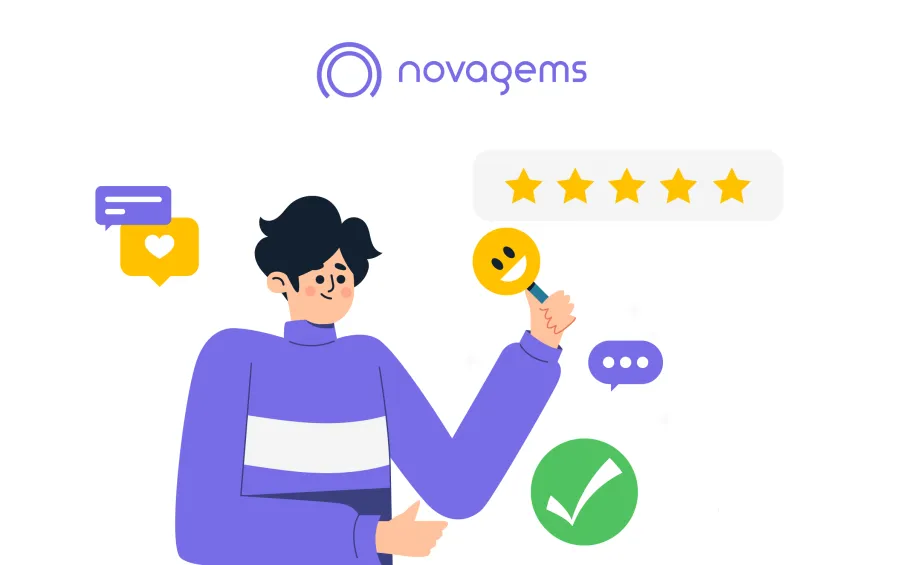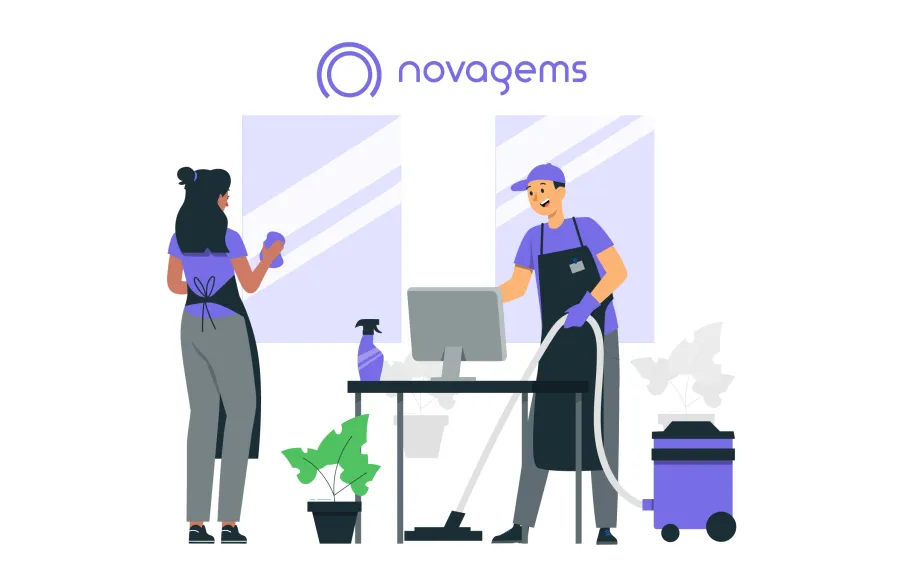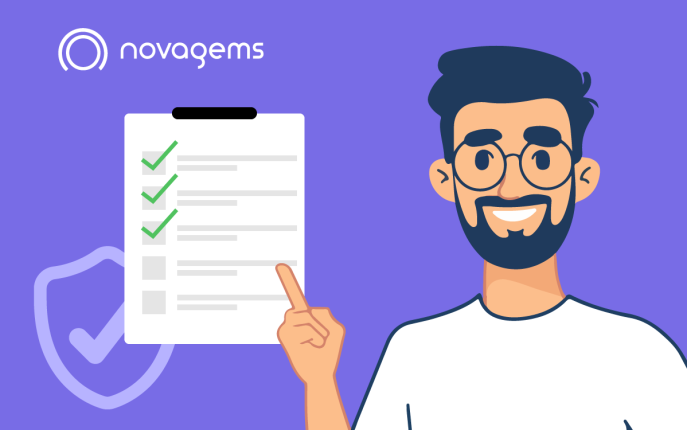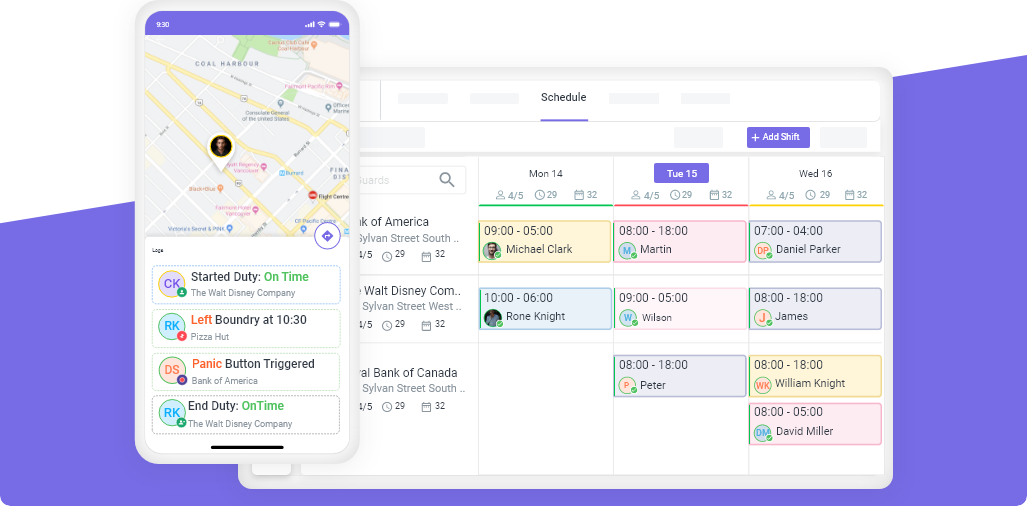Ultimate Guide to Security Guard Tour Systems
Thu, Sep 28, 2023
Read in 7 minutes
Security guard tour systems are available in a variety of types, including mechanical, electronic, GPS and geofencing. Each type of system has its own advantages and disadvantages, so it is important to choose the right system for your needs.
Why Implement a Security Guard Tour System?
It’s like getting a new lock for your bike to keep it safe - extra security! These systems help places make sure everything is protected, like valuable artwork in a museum or even patients in a hospital.
Real-Time Updates: These systems are like having a direct line to the security team, 24/7. If something unusual happens, like a door opening at an odd hour or a weird noise in a museum, the system sends an instant alert. This way, security teams can respond quickly to any potential threats.
Data for Decisions: Remember how you collect data for your school projects? Security Guard Tour Systems do the same thing, but for security. They gather data on what the guards are doing, where they’ve been, and when they were there. This data helps security managers make informed decisions, like where to assign more guards or where to improve security measures.
No More Missed Spots: Security Guard Tour Systems ensure that no spots are missed during security rounds. Guards use tools like NFC tags or barcode scanning to mark checkpoints. If they miss one, the system knows, and it’s like a reminder to go back and check. It’s like never losing your favorite game controller again.
Features to Look for in a Guard Tour System
You want to look for things like GPS tracking (so you know where guards are), barcode scanning (for checking certain spots), and real-time alerts (like getting a notification when your favorite game goes on sale). These features make sure everything runs smoothly.
- GPS Tracking: Well, Guard Tour Systems with GPS tracking make sure you always know where your security guards are. It’s like having a map that shows you their exact locations in real-time. This feature is super important for monitoring patrols and responding quickly to incidents.
- Real-Time Alerts: Remember how your phone pings you with notifications? Guard Tour Systems can do the same thing, but for security. They send instant alerts if something suspicious happens. For example, if a door opens at an unusual time or someone enters a restricted area, the system immediately sends an alert to the security team.
- Reporting and Analytics: This feature is like having a scoreboard for a sports game. It gathers all the data on patrols and incidents and turns it into reports and insights. Managers can use these reports to evaluate security performance, identify patterns, and make informed decisions.
- User-Friendly Mobile App: Guards use a mobile app on their smartphones or devices to log their activities and checkpoints. A user-friendly app makes it easy for them to use. It ensures that guards can complete their rounds without any technical hiccups.
- Durability and Battery Life: Guards are always on the move, so their devices need to be tough. A durable Guard Tour System can handle the bumps and drops of real-world patrolling. Plus, long battery life ensures that the system won’t give up during the middle of a patrol.
Maximizing Security with Real-time Reporting
This part is where things get really high-tech. Real-time reporting is like having a live stream of your security guard’s team. These systems can instantly send a message or alert to the security team if something seems off. It’s like having a radar that detects trouble and warns the guards. So, they can swoop in and save the day.
Let’s dive into one of the coolest aspects of Guard Tour Systems: maximizing security with real-time reporting.
Maximizing security with real-time reporting is like having your security system on high alert, 24/7. The system must be ready to spring into action at any moment. The real-time communication allows security teams to stay ahead of any threat.
Guard Tour System Implementation: Best Practices
Guard tour systems work best when everyone knows how to use them. Training the security team is super important, and they need to follow a schedule to make sure nothing is missed. It’s like having a game plan to win.
- Comprehensive Training: Security guards should receive training on how to use the Guard Tour System. This includes many things and noy just one. Understanding the system’s features, using the mobile app, and handling real-time reporting. Training ensures that everyone on the team is on the same page and can maximize the system’s potential.
- Define Patrol Routes: Defining clear patrol routes is crucial. Determine the specific checkpoints guards need to visit during their rounds. These checkpoints should cover critical areas that require regular monitoring.
- Monitoring and Supervision: Supervisors should monitor the Guard Tour System. They can use the system’s reporting and analytics features to track patrols, check for missed checkpoints, and respond to real-time alerts.
- Integration with Other Systems: Guard Tour Systems can be even more effective when integrated with other security systems. Be ready to use systems like surveillance cameras or access control systems. This integration allows for a comprehensive security setup.
- Documentation: Keep detailed records of Guard Tour System usage and incidents. This documentation is essential for audits, investigations, and future planning.
- Guard Feedback: Guards’ feedback is invaluable. Encourage security personnel to provide input on the system’s usability and any challenges they encounter. Their insights can lead to system enhancements and a better user experience.
Areas To Consider When Placing Your Guard Tour Checkpoints
-
Entrances and Exits:
Start by placing checkpoints at all entrances and exits of the facility. This includes main gates, emergency exits, and any other points of access. It ensures that guards can track every individual entering or leaving the premises, allowing for better control and identification.
-
Perimeter and Fencing:
Ensure that guard tour checkpoints are strategically positioned along the perimeter of the property, especially near vulnerable areas such as gaps in fencing, gates, or areas prone to unauthorized access. This helps maintain a secure perimeter and enables guards to detect any breaches promptly.
-
Critical Infrastructure:
Identify and mark critical infrastructure within the facility, such as electrical rooms, data centers, or control rooms. Placing checkpoints near these areas allows guards to closely monitor their surroundings and detect any suspicious activities that may pose a threat to essential operations.
-
High-Value Assets:
If your facility houses valuable assets, such as artwork, equipment, or sensitive information, consider placing guard tour checkpoints near these areas. It enhances the security coverage and helps prevent theft or damage by providing additional surveillance and deterrence.
-
Blind Spots and Low Visibility Areas:
An effective guard tour system should cover all blind spots and areas with limited visibility. These include stairwells, basement levels, parking lots, or areas obstructed by vegetation or structures. By strategically placing checkpoints in these locations, guards can ensure comprehensive coverage and minimize potential security vulnerabilities and increase the efficiency in response time.
-
Emergency Equipment and Safety Measures:
Emergency equipment, such as fire extinguishers, first aid kits, or emergency exits, should have dedicated guard tour checkpoints nearby. These checkpoints serve as reminders for guards to inspect the equipment regularly, ensuring it is in proper working condition and ready for use in case of emergencies.
-
Security Systems and Devices:
Consider placing checkpoints near security systems and devices, such as CCTV cameras, access control panels, or alarm systems. This allows guards to monitor the functionality of these systems, identify any malfunctions or tampering, and promptly address any issues that may compromise the overall security of the facility.
-
High-Traffic Areas:
Identify areas within the facility that experience high foot traffic, such as lobbies, reception areas, or corridors leading to critical sections. Placing guard tour checkpoints in these areas ensures that guards can easily observe and interact with individuals passing through, maintaining a visible security presence and deterring potential threats.
-
Restricted or Sensitive Zones:
In facilities with restricted or sensitive zones, such as research labs, storage areas, or confidential document repositories, guard tour checkpoints should be strategically placed. These checkpoints help enforce access control protocols, ensuring only authorized personnel can enter these areas, and provide an audit trail of any access attempts.
-
Remote or Isolated Locations:
If your facility includes remote or isolated locations, such as outbuildings, remote gates, or remote utility stations, it is crucial to place guard tour checkpoints in these areas. Regular checks and monitoring of these locations reduce the risk of unauthorized access and ensure the safety and security of these often overlooked areas.
Conclusion
Guard tour systems might not have capes, but they’re essential for keeping places safe and sound. So, next time you visit a museum or a cool event, know that there’s a superhero team and their trusty sidekick, the guard tour system, working to keep everyone safe. Stay awesome and stay safe, like a true hero!
Get a Free Trial
Sign up For Newsletter
Latest Blog Posts
Get Started
Start being productive & grow your business
with Novagems




